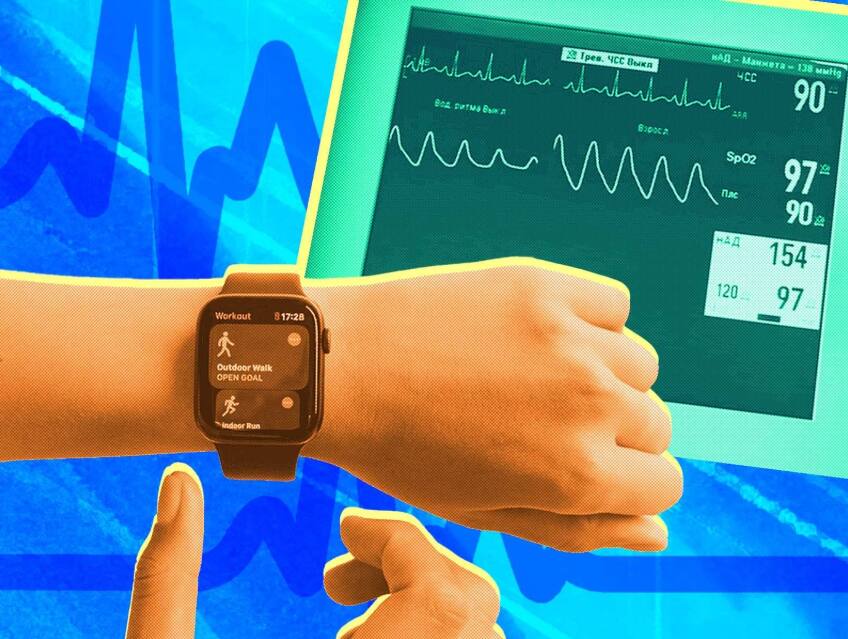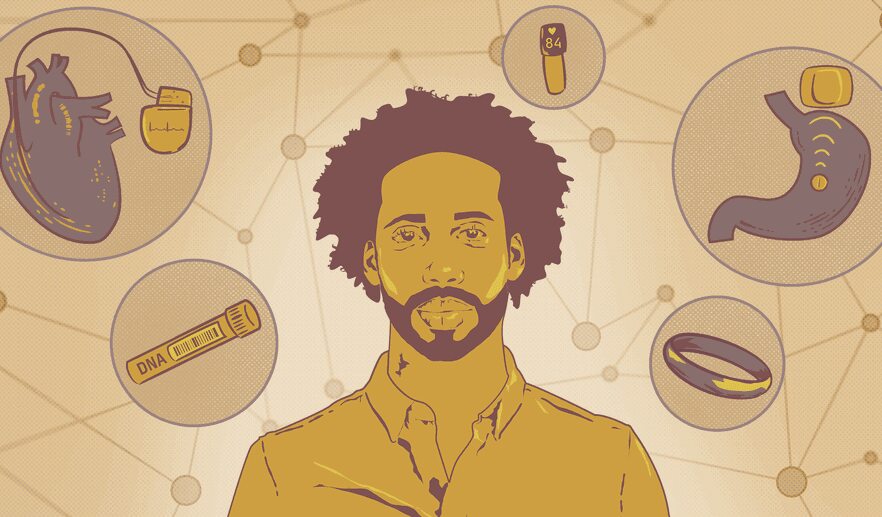The Future of the Internet of Bodies
The Internet of Bodies (IoB) is changing the way we engage with technology. This emerging discipline links human bodies to digital systems, opening up new possibilities. From healthcare to intelligent cities, IoB is on the next frontier. As it rapidly evolves, it’s important to understand its function and role. Here’s a post explaining what the Internet of Bodies is, how it operates, the advantages and the risks, and what it means for society.
What is the Internet of Bodies?

The Internet of Bodies carries the Internet of Things (IoT) from the physical world into the human body. It encompasses gadgets that monitor and interact with our bodies as they pick up readings on heartbeats, glucose levels, or even cerebral signals. IoB is not merely a smartwatch—it’s a revolution in networking.
- Wearable devices: Smart watches and fitness monitors measure vital signs.
- Implantable devices: Pacemakers or insulin pumps provide real-time medical information.
- Internal conditions are monitored by smart pills.
- Embedded systems: BCI integrates minds and machines.
This technology collects accurate biometric information, opening doors for innovation. It’s changing healthcare and fitness, and even urban planning.
How Does the Internet of Bodies Work?
Internet of Bodies technology is dependent on sophisticated infrastructure. Sensors and analytics complement each other and work in perfect harmony. Data is collected through devices and processed and transmitted through secure networks. Let’s dive in.
- Hardware and sensors: Wearables, implants, or ingestibles collect physiological data.
- Types of devices: External wearable devices (e.g., fitness bands), internal implants (e.g., pacemakers), and embedded systems (e.g., neural interfaces).
- AI and machine learning: These scan huge datasets for insights or automated responses.
- Connectivity: 5G drives rapid data transfer, and 6G and 7G are in the pipeline for even stronger integration
This integrated system supports real-time monitoring and decision-making. It’s the key behind IoB’s disruptive power.
Advantages of the Internet of Bodies
IoB brings seminal benefits in many areas. Its effects extend from healthcare to lifestyle. Its benefits must be understood and utilized.
Internet of Bodies Healthcare
Internet of Bodies healthcare is changing medical treatment. IoB devices make continuous monitoring possible and catch developing issues early. They assist in personalized therapies and enhance patient outcomes.
- Instant monitoring: Monitors heart rate, sugar level, or oxygen levels in a snap.
- Non-invasive diagnostics: Wearables spot abnormalities without tests in vivo.
- Management of chronic conditions: Devices like insulin pumps improve quality of life.
- Less healthcare burden: Remote monitoring relieves the burden on hospitals.
These innovations make health care more proactive and accessible.
What Are the Advantages of the Internet of Bodies?
Beyond healthcare, IoB improves multiple areas of life. It maximizes fitness, well-being, and even insurance. Here’s the way it works:
- Fitness and well-being: Wearables monitor activity, sleep, and stress for healthier lives
- Data-driven insurance: Personalized, cost-effective insurance policies are formed through health data.
- Public health insights: Preventive care strategies take cues from aggregated IoB data.
These advantages empower both individuals and communities.
IoB Wearable Devices
IoB wearable devices are the most visible segment of this technology. Smart watches and body-worn monitors capture behavior and medical data. They also synchronize with cell phones and the cloud for convenience access.
- Health tracking: Monitors steps, calories, and heart rate.
- Behavioural insights: Monitors sleep habits or levels of stress
- Easy integration: The apps give actionable insights from information.
Wearables popularize IoB and make it accessible everywhere.
IoB Technology and Implementation
Internet of Bodies tech is rapidly developing. Coming innovations in the form of brain-computer interfaces and implants are redefining limits. Secure communication and artificial intelligence form the nucleus of deployment.
- Emerging technology: Neural interfaces provide direct brain-to-device communication.
- Secure data transfer: Data encryption allows secure transfer between devices.
- Embedded AI: Embodies advanced device functionality, such as automatically changing insulin dosages.
These developments make IoB systems intelligent and dependable.
IoB Privacy Issues
IoB privacy issues are a key concern. They gather sensitive information, and risks of unauthorized access arise from this. Ethical and legal concerns relating to who owns the data arise.
- Sensitive information: Comprises heart rate, brain activity, and geolocation.
- Risks: Data breaches could expose personal health information.
- Legal regulations: Regulations such as HIPAA and FTC guidelines work to safeguard consumers.
- Ethical concerns: Issues of consent and surveillance raise debates.
Strong regulations are essential to safeguard user trust.
Internet of Bodies Security Threats

The security risks of the Internet of Bodies are very serious. Device vulnerabilities would open the door to devastating cyberattacks. Strong security systems are not optional.
- Weak encryption or software vulnerabilities put devices at risk.
- Consequences: Compromised medical devices can physically harm patients.
- Regulation: The FDA establishes standards for the security of devices.
- Mitigation measures: Data is secured by regular updates and encryption.
Proactive cybersecurity forms the backbone of IoB’s secure development.
How Will the Internet of Bodies Change Society?
How will the Internet of Bodies shape society? IoB will change healthcare, urbanization, and many other aspects of life. It will also create ethical and accessibility issues.
- Healthcare transformation: Empowers patients through real-time data
- Smart city integration: Promotes improved public health and safety.
- Ethical issues: Concerns about autonomy and dependency on tech arise.
- Accessibility gaps: Disparate access may breed wider societal inequalities.
The key to IoB’s impact on society will be balancing innovation and fairness.
IoB Smart Cities
IoB smart cities utilize IoB data for better urban living conditions. IoB improves urban living through integration with IoT systems and enhances safety and public health in cities.
- Health monitoring: Monitors community well-being indicators such as effects on air quality.
- Emergency response: Real-time data supports timely medical interventions.
- Holistic integration: Integrates with IoT for smart urban planning.
This synergy produces healthier and more responsive cities.
Conclusion
Internet of Bodies has tremendous capacity to change lives. It has benefit after benefit in areas ranging from healthcare to smart cities. Yet, IoB security threats and privacy issues require serious attention. Strong regulations and ethical innovation will be important keys. As IoB continues to advance, it will alter our relationship with technology. Keeping ourselves updated will make us responsibly harness its might.
FAQs
What is the Internet of Bodies?
It’s a set of devices linked to the human body, harvesting biometric information such as heart rate or glucose levels. They consist of wearables, implants, and ingestibles, taking IoT all the way into human biology.
How does the Internet of Bodies work?
IoB devices capture and examine data by utilizing sensors, AI, and networking like 5 G. They exist on a spectrum from wearable to implants and use data processing to offer insights on behavior or health.
What are the advantages of the Internet of Bodies?
IoB enhances medical care by monitoring in real time, promotes fitness and well-being, and facilitates data-backed insurance and community health policies.
What are the privacy issues behind IoB?
IoB devices gather sensitive information at the risk of breaches or misuses. Ethical concerns related to surveillance and consent demand strict regulatory safeguards.
How will IoB affect smart cities?
IoB data helps optimize urban health governance, enhance emergency response and responses, and be merged with IoT for wiser and healthier cities.
If you want more Information, explore our website: Iofbodies

